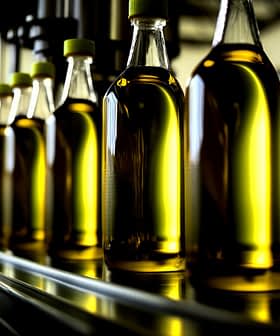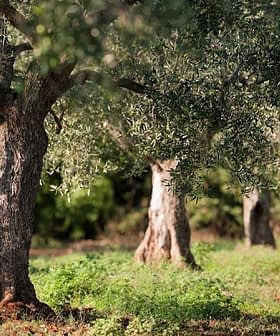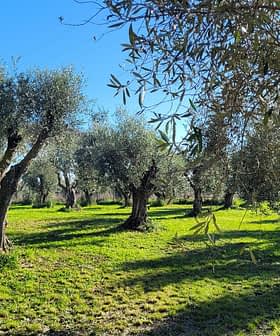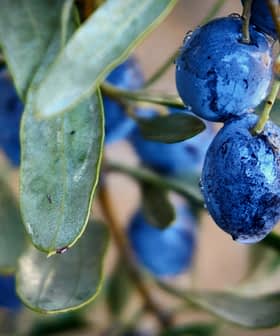Study Suggests Stink Bug Caused Mysterious Fruit Drop in Italy
The brown marmorated stink bug has been identified in Italian and Greek olive groves. Increasing evidence now links its presence to an early fruit drop in northern Italy.
Reports of premature fruit drop in northern Italian olive groves have been increasing, with studies suggesting that the brown marmorated stink bug is the main cause, leading to significant production losses. Research has shown that high densities of these stink bugs during early stages of fruit development trigger olive tree defense mechanisms, resulting in premature fruit drop and potential impacts on olive oil quality, highlighting the need for integrated pest management strategies and further sustainable control methods.
In recent years, reports of premature fruit drop and subsequent production losses in northern Italian olive groves have steadily increased.
Numerous causes have been posited, from extreme weather and climate change to unidentified fungal infestations, invasive pests or combinations of all of the above.
However, studies over the past year strongly suggest that the brown marmorated stink bug (Halyomorpha halys) is the primary driver.
See Also:Invasive Sheep Devastate Olive Groves in Eastern SpainH. halys, native to China, Japan, the Korean peninsula and other Asian regions, is believed to have been accidentally introduced to North America in the late 1990s.
Since then, it has become a significant agricultural pest. Highly polyphagous, the bug spreads easily to new food sources and, by 2010, was causing annual losses of at least $37 million in apple crops alone.
The insect’s spread to and through Europe has followed a similar pattern. It is believed to have been introduced to the continent via Switzerland and reached the United Kingdom by 2021.
It has also reached Turkey, where it has been stated that the bug has already caused a 20 percent drop in hazelnut yield in the province of Artvin, losses that are expected to rise to 50 percent or $1 billion in damages.
A 2023 study published in the journal Insects aimed to characterize the damage inflicted by H. halys on olive fruits and its impact on premature fruit drop and fruit quality.
The study was conducted in northern and central Italian olive groves, using natural observations and controlled field experiments.
The field experiments analyzed the impacts of H. halys at two of the fruit’s developmental stages: pre-pit-hardening and post-pit-hardening.
The results showed that high densities of H. halys caused a significant increase in premature fruit drop during the pre-pit-hardening stage, which was less pronounced during the post-pit-hardening stage.
Chemical analysis revealed significant changes in the phenolic composition of affected olives, with damaged fruits having higher concentrations of phenolic compounds such as oleuropein.
These phenolic compounds play a role in the plant’s defense mechanisms, suggesting that H. halys feeding triggers these mechanisms by inducing stress in the tree.
These elevated phenolic levels may affect the yield and quality of olive oil, as phenolic compounds are central to olive oil’s flavor and health benefits.
A further study, published in the Journal of Economic Entomology in June 2024, sought to determine the cause of premature fruit drop across multiple olive groves in northern Italy. The researchers from the Universities of Verona and Padova began by examining fallen olives for evidence of fungal infections or insect-feeding activities.
Fungal species were isolated from both healthy and dislodged olives. However, the study found no significant differences in the fungal presence in healthy and dislodged olives.
In addition, most of the species identified were common endophytes with which the olive tree has a generally mutualistic relationship, indicating that fungal infections were not responsible for the observed olive drop.
In contrast, the trials demonstrated a strong correlation between the number of stink bugs present and the extent of premature fruit drop.
In keeping with the results of the 2023 study, the most significant damage was caused during the early stages of fruit development before the olive pits had fully hardened.
The stink bugs’ feeding was found to have caused seed necrosis, which in turn led to the tree shedding fruit prematurely. The team concluded from these results that H. halys was the primary driver of this early olive drop, with the highest infestations resulting in the most significant fruit loss.
The researchers recommended that affected farmers adopt integrated pest management strategies, incorporating physical exclusion and targeted insecticide use.
Given the ever-increasing spread of this and other invasive pest species, they also stressed the need for future research into more sustainable and scalable control methods.
Share this article






